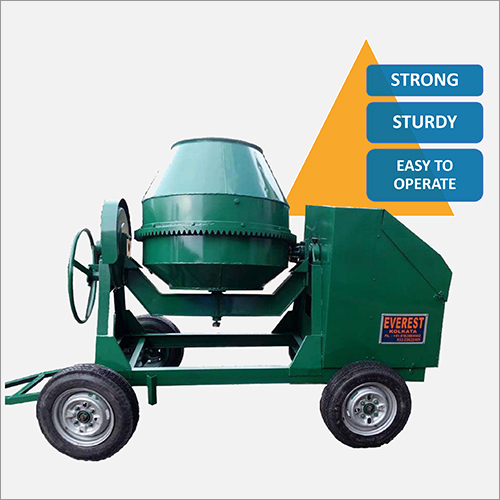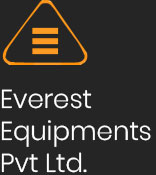
Simple Concrete Mixer
105000 INR/Piece
Product Details:
- Product Type Concrete Mixer
- General Use Construction
- Material Steel
- Type Cement Mixer
- Computerized No
- Automatic No
- Control System Manual
- Click to view more
X
Simple Concrete Mixer Price And Quantity
- 95000.00 - 105000.00 INR/Piece
- 105000 INR/Piece
- 1 Piece
Simple Concrete Mixer Product Specifications
- 6 Months on Manufacturing Defects
- Other
- No
- Steel
- Construction
- Cement Mixer
- Other
- Green
- No
- Manual
- Concrete Mixer
Simple Concrete Mixer Trade Information
- Cash Advance (CA) Letter of Credit (L/C) Cash in Advance (CID)
- 10 Piece Per Week
- 2 Days
- Sikkim Manipur Meghalaya Andaman and Nicobar Islands East India Assam Arunachal Pradesh Bihar Chhattisgarh Jharkhand Mizoram Tripura West Bengal Nagaland Andhra Pradesh Odisha
Product Description
A simple concrete mixer machine is a machine used to mix cement, water, and other aggregates (such as sand, gravel, or crushed stone) to create a uniform and consistent mixture of concrete. This machine is commonly used in construction projects, such as building foundations, sidewalks, driveways, and roads.
Simple concrete mixing machine can be powered by electricity, gasoline, or diesel engines, and they come in various sizes and designs. The most common type of concrete mixer is the drum mixer, which has a rotating drum that mixes the ingredients together as it turns.
In addition to drum mixers, there are also pan mixers, which have a stationary mixing pan and rotating blades, and twin-shaft mixers, which use two rotating shafts with paddles to mix the concrete.
To use a concrete mixing machine, the operator adds the dry ingredients to the mixer first, followed by the water. The machine then mixes the ingredients together until a consistent mixture is achieved. The operator can adjust the speed and direction of the drum or blades to ensure thorough mixing.
Overall, the simple concrete mixer is an essential tool for construction projects, as it ensures that concrete is mixed properly and efficiently, resulting in a strong and durable finished product.
Simple Concrete Mixing Machine Features:
Concrete mixer machine come in various sizes and designs, but some of the common features found in most concrete mixers include:
2. Mixing Drum: This is the main feature of the concrete mixing machine where the ingredients are mixed. It can be made of steel, plastic, or other materials, and it rotates to mix the concrete.
3. Motor: The motor provides power to the mixer and drives the mixing drum. Concrete mixers can be powered by electricity, gasoline, or diesel engines.
4. Mixing Blades: The mixing blades are inside the drum and rotate to mix the ingredients. They can be designed to move in one or both directions.
5. Chassis: The chassis is the frame that supports the mixer and can be made of steel or other materials. It may have wheels or be stationary, depending on the design.
6. Control Panel: Some concrete mixers have a control panel that allows the operator to adjust the speed and direction of the drum or blades.
7. Capacity: Concrete mixer machines come in various sizes and capacities, ranging from small portable mixers that can be used for DIY projects to large industrial mixers that can produce large volumes of concrete.
8. Safety Features: Most concrete mixers have safety features such as interlocks, emergency stop buttons, and guards to prevent accidents and injuries.
9. Portability: Some concrete mixers are designed to be portable, with wheels or handles for easy transportation.
Overall, the features of a concrete mixer will depend on its design and intended use, but these are some of the common features that can be found in most mixers.
Frequently Asked Questions:
Here are some frequently asked questions about concrete mixing machine:
1. What is the difference between a cement mixer and a concrete mixer?
Ans: A cement mixer is a machine that is used to mix cement, sand, and water to make concrete. A concrete mixer, on the other hand, is a machine that is used to mix cement, sand, water, and other aggregates to make concrete.
2. How do I choose the right concrete mixer for my project?
Ans: The size and capacity of the mixer will depend on the size and scope of your project. Small DIY projects may only require a small portable mixer, while larger construction projects may require a larger industrial mixer. It is important to consider the mixing capacity, power source, and portability of the mixer before choosing one.
3. How much concrete can a mixer hold?
Ans: The capacity of a concrete mixer can range from a few cubic feet to several cubic yards. The size of the mixer will depend on the amount of concrete needed for the project.
4. How do I clean a concrete mixing machine?
Ans: To clean a concrete mixer, rinse the drum with water and remove any leftover concrete or debris. For tough stains, you can use a solution of water and vinegar or a commercial concrete cleaner. Be sure to follow the manufacturer's instructions for cleaning the mixer.
5. How long does it take to mix concrete in a mixer?
Ans: The mixing time will depend on the size and capacity of the mixer, as well as the desired consistency of the concrete. Typically, it takes between 2-4 minutes to mix concrete in a standard drum mixer.
6. Can a concrete mixer be used to mix other materials?
Ans: Yes, some concrete mixers can be used to mix other materials such as mortar, stucco, and grout. However, it is important to consult the manufacturer's instructions to ensure that the mixer is compatible with the material being mixed.
Enter Buying Requirement Details
Other Products in 'Concrete Processing Range' category
We supply our products in Odisha, Jharkhand, Bihar, North Eastern States, West Bengal, Andaman and Nicobar Islands, Andhra Pradesh, Arunachal Pradesh, Assam, Manipur, Meghalaya, Nepal and Bhutan.

 English
English Spanish
Spanish French
French German
German Italian
Italian Chinese (Simplified)
Chinese (Simplified) Japanese
Japanese Korean
Korean Arabic
Arabic Portuguese
Portuguese




